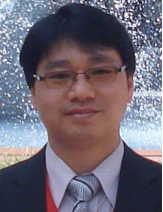讲座嘉宾:孙子其高级讲师(澳大利亚昆士兰科技大学)
讲座主持:周东斌书记
讲座时间:2017年11月20日(周一)10:00-11:00
讲座地点:工四202
讲座主题:多功能无机仿生纳米材料的研究

个人简介:孙子其博士,澳大利亚昆士兰科技大学高级讲师(UK体制)、澳大利亚优秀青年基金获得者。2003年中南大学材料学院获得学士学位,同年考入中国科学院金属研究所高性能陶瓷部硕博连读,研究方向为高性能结构陶瓷,2009年获工学博士学位。同年获得日本国立材料研究所博士后研究基金和德国洪堡学者基金支持。2010年加入澳大利亚卧龙岗大学,在2010-2015年间独立获得澳大利亚国家奖研金、澳大利亚创新项目基金、卧龙岗大学校长奖基金、澳大利亚优秀青年等基金支持在澳大利亚卧龙岗大学超导与电子研究所进行金属氧化物纳米材料在光电能转化方面的研究(总金额达180万澳元)。2015年起在昆士兰科技大学获得终生讲席职位。目前孙子其博士已在Nature Communications,Advanced Materials,Journal of the American Chemical Society,Advanced Energy Materials, Nano Energy,NPGAsia Materials,Small等国际著名期刊发表论文83篇,引用达2500次,h因子27。兼任美国金属、材料、矿物协会(TMS)能源委员会副主席、EPD/LED分部评奖委员会委员、能源委员会评奖委员会委员,Sustainable Materials & Technology杂志(Elsevier,ESCI,CiteScore = 5.22)主编,Surface Innovations(ICEPublishing, SCI, IF= 1.468)副主编,Scientific Reports (Nature Group)和JMST(Elsevier,SCI,IF=2.678)杂志编委等职。
报告摘要:Learning from nature takes ideas from natural species and develops novel functional materials based on these concepts,e.g., bio-inorganic materials (biomineralization), bio-inspired multiscale structured materials (chiral morphologies), bio-nanomaterials (bio-nanoparticles), hybrid organic/inorganic implant materials (bonelike composites), and smart biomaterials. Many of these smart materials have surfaces that dynamically alter their physicochemical properties in response to changes in their environmental conditions and to triggered control of interfacial properties.In our research, by mimicking the well-ordered multiscale structures of natural interfaces or surfaces, many inorganic nanomaterials with bio-inspired structures and functions have been designed. For example,we designed fly-eye inspired superhydrophobic anti-fogging nanomaterials that have a low adherence force to water droplets and thus resist fogging-induced ice build-up even when exposed in extreme environments.The development of the fish-scale bio-inspired inorganic nanostructures, which have similar multiscale structures and multiple-functions to that of the natural targets, greatly extends the applications of bio-inspired materials to fields from micromechanical devices to heavy-duty machines as protective coatings against mechanical damage and chemical corrosion, as optical elements in optical devices and photovoltaic energies, and as low-drag or low-friction surfaces in gaseous, liquid, and solid media, etc. Therefore, we believe that the design of bio-inspired nanostructures could provide a new approach for develop novel multifunctional nanomaterials in the future.